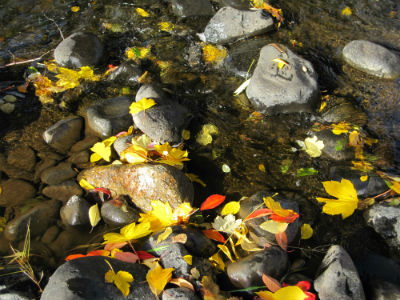Behold, I will do a new thing, now it shall spring forth; shall you not know it? I will even make a road in the wilderness, and rivers in the desert. Isaiah 43:19
Many of the rivers not too far from my home are a bit low in nutrients relative to other places in the mountains. The granite rocks which surround these streams don’t provide a lot of essential minerals such as calcium, phosphorus, or magnesium. The result is that the lower level of the food chain, i.e. the small plants and insects, which feed on the plants, aren’t quite as numerous as in other areas of the mountains. So when the leaves from shrubs and hardwoods begin to fall and clutter the waters, the insect activity begins to increase. I’ve seen some of the largest hatches of aquatic insects during the fall than at any other time.
It seems that very little, if anything, goes to waste in the outdoors. The energy which the tree exerted to grow the leaf which lands in the stream will now be recycled by the aquatic insects into new growth and reproduction of their kind. This in turn will feed the critters higher up on the food chain, such as birds and fish. And those critters may well be eaten by larger animals such as mink, otters, wolves, and bears. And of course, when these higher level predators die, their decaying bodies return the same nutrients back to the system in one form or another.
The energy flow/cycle within an ecosystem is an intricate structure which is rather remarkable. There are a lot of areas of study I’ve never looked into, but I don’t know of anything nearly as complex and functional which has ever been designed by man. I wouldn’t even know where to begin to design something so intricate. Yet Scripture tells us of Jesus that All things were created through Him and for Him. Colossians 1:16.
How’d He ever think of an energy cycle so complex? This, along with a few billion other things.
Have a great day.
